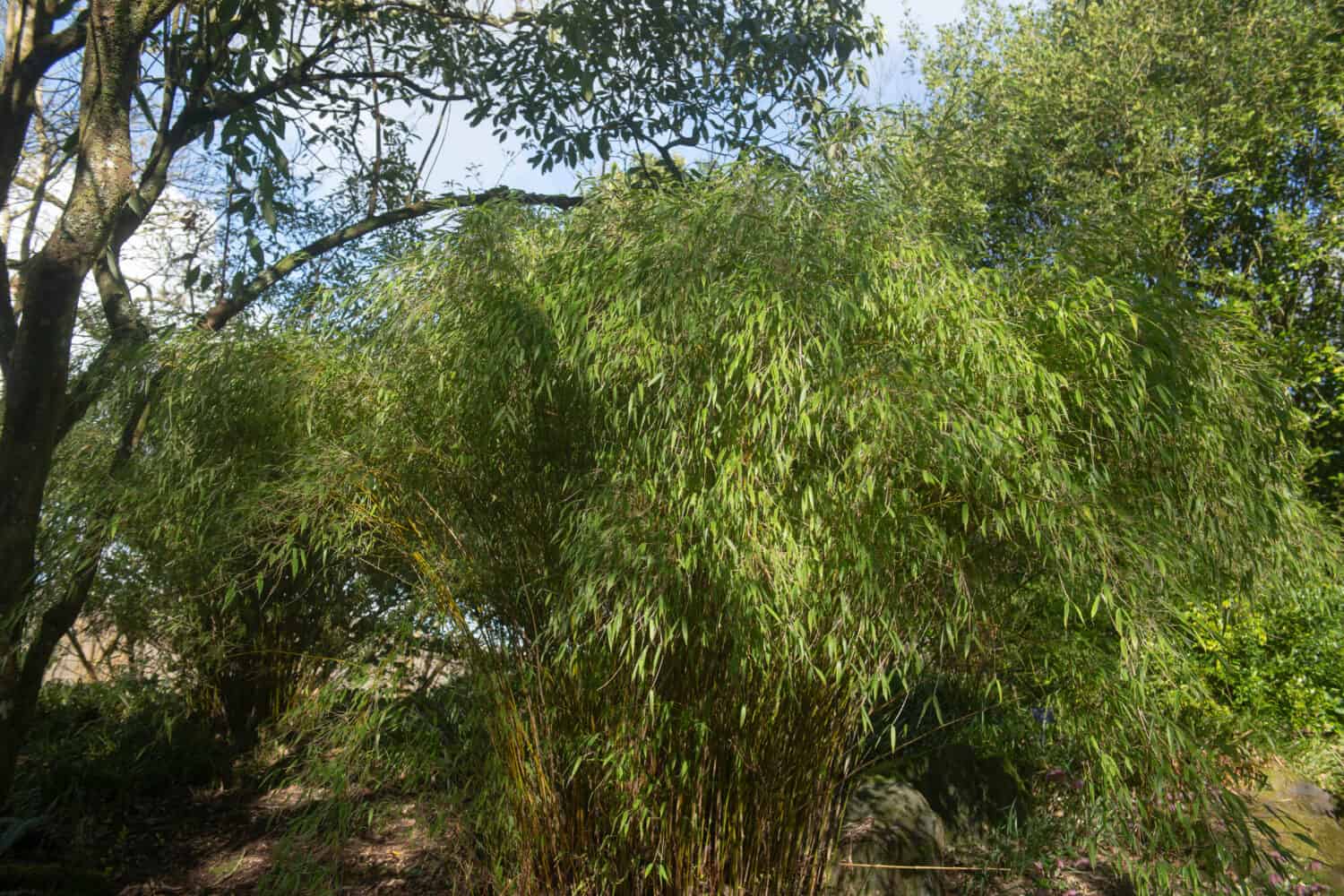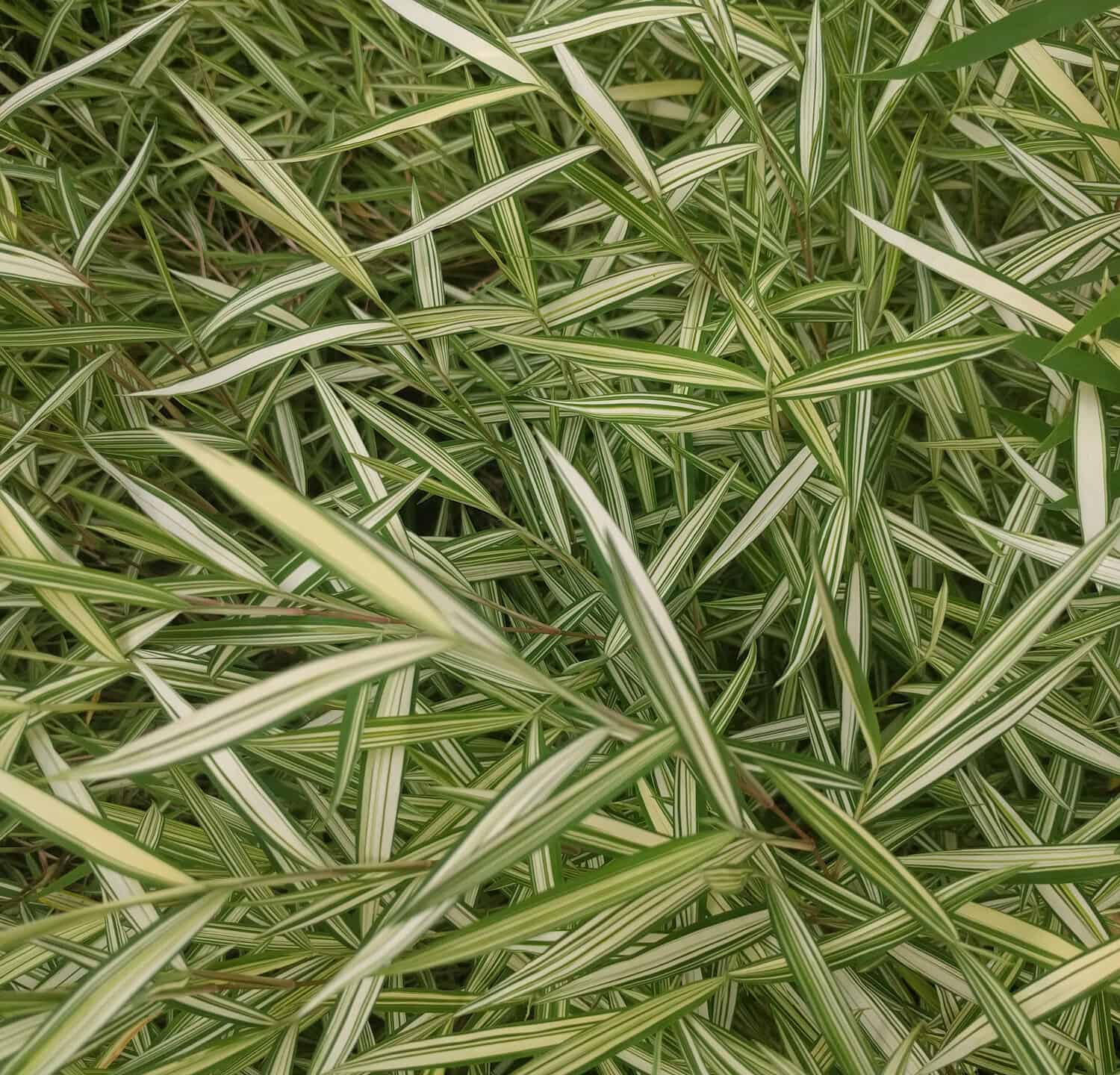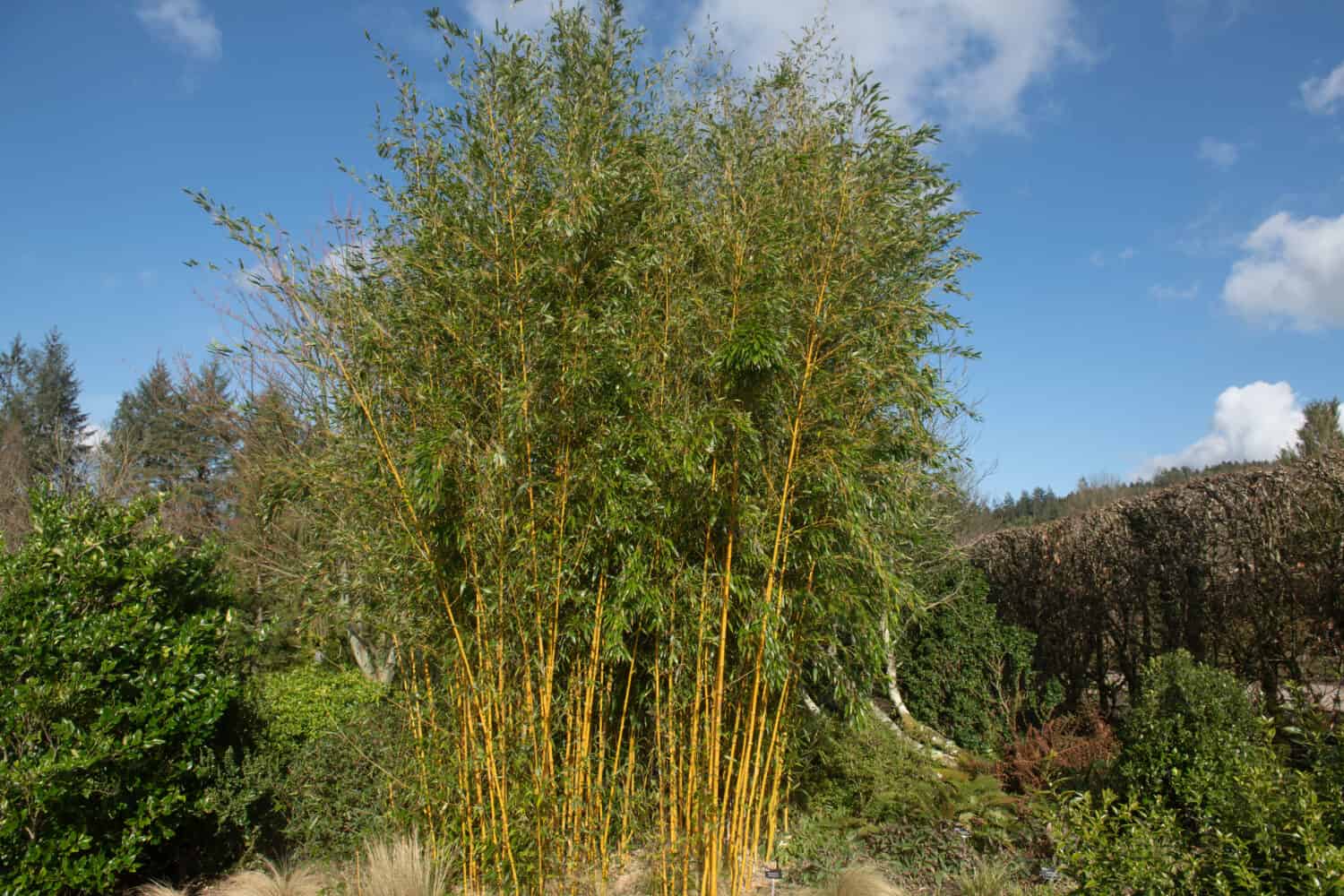Bamboo has gained tremendous popularity among gardeners and homeowners due to its versatile and fast-growing nature. With its elegance and sustainable properties, bamboo offers a myriad of benefits. That makes it an excellent choice for adding a touch of exotic beauty to gardens and landscapes in Tennessee. You only need to learn which varieties will grow well in the state and how to care for them properly. You will find all that information in the article below.

Some bamboo varieties, like this umbrella bamboo, grow extremely well in Tennessee.
©Peter Turner Photography/Shutterstock.com
Varieties of Bamboo to Grow in Tennessee
Tennessee’s diverse climate makes it an ideal environment for growing many bamboo varieties. When selecting bamboo for your Tennessee garden, choose varieties well-suited to the local environment.
That task sounds a little easier than it is. After all, the state has a significant range in climate and weather. Depending on where you live, the USDA Hardiness Zone will fall somewhere between 5b and 8a. So some bamboo varieties may (or may not) be perfectly suited for your area.
Here are six bamboo species that are suitable for at least some parts of Tennessee.
1. Golden Bamboo (Phyllostachys aurea)
This bamboo plant is one of the most popular species. It is well-known for its bright golden canes that mature to green with age. Golden bamboo is cold hardy, and also highly adaptable to various soil conditions. It is a highly reliable choice for Tennessee gardeners.
Golden bamboo typically grows between 10 and 20 feet high but sometimes can reach a whopping 30 feet tall. It thrives in Zones 4a-10b. So no matter where you live in Tennessee, this is a good choice.
2. Black Bamboo (Phyllostachys nigra)
This bamboo species creates a dramatic and eye-catching visual impact with its striking black culms. And since it reaches a stunning height of 35 feet, it is ideally suited for a wind or privacy screen.
Black bamboo is remarkably tolerant to both heat and cold. So it is an excellent choice for Tennessee’s fluctuating temperatures. This bamboo species is best suited for Zones 7-10. It is a solid choice for bamboo lovers in much of the state.
3. Dwarf Whitestripe Bamboo (Pleioblastus fortunei)
Ideal for smaller gardens and containers, this dwarf bamboo variety reaches a maximum height of three feet. It features delicate leaves with thin white stripes, adding an elegant touch to any landscape. Its compact size makes it a versatile option for gardens with limited space.
Dwarf whitestripe bamboo is also suitable as a ground cover. But beware. It loves to spread rapidly. So if you don’t want it taking over your space, make sure to add a rhizome block. It thrives in Zones 4a-10b, making it a potentially good addition to any landscape.
4. Yellow Groove Bamboo (Phyllostachys aureosulcata)
This bamboo variety offers a vibrant splash of color with its yellow canes featuring distinctive green grooves. Yellow groove bamboo is cold-hardy and adapts well to different soil types. It grows best in Zones 4a-11b.
A note of caution, however. Yellow groove bamboo spreads incredibly rapidly. Some states have it listed as an invasive species, so planting regulations or restrictions may exist. Check with your local agriculture or extension office before purchasing.
5. Umbrella Bamboo (Fargesia murielae)
This bamboo is characterized by its graceful arching canes and delicate foliage. Umbrella bamboo thrives in partially shaded areas, but it does not like too much humidity.
While umbrella bamboo thrives in Zones 7-10, you will need to consider your region’s humidity levels. Some parts of Tennessee may prove the perfect growing environment for this lovely plant.
6. River Cane (Arundinaria gigantea)
Also known as Giant Cane, River Cane is well-adapted to Tennessee’s climate. That is because this spectacular species is native to the southeastern and central regions of the United States. It is even easily found growing naturally along streams and rivers in some areas.
River Cane typically reaches 8 to 20 feet in height. But, sometimes, it can reach up to 25 feet tall. It is winter hardy in Zones 5a to 9b. So it will make a fantastic addition to any garden or landscaped area in Tennessee.

Dwarf whitestripe bamboo has stunning foliage and grows well in Tennessee.
©sharohyip/Shutterstock.com
Planting and Caring for Bamboo in Tennessee
Now that you’ve gotten a good glimpse at what bamboo species will grow well in Tennessee let’s look at how to plant and care for them. In general, bamboo is a relatively easy plant to grow. But there are some essential things to watch for before you jump in.
Location
When selecting a location for planting bamboo, choose an area that receives partial to full sun exposure. Bamboo prefers areas with good air circulation and ample sunlight. However, some bamboos do well in partial shade. Find out what your preferred variety likes when you purchase it. That way, selecting a prime spot becomes easier.
Soil
Bamboo requires fertile soil rich in organic matter. Before planting, add well-rotted manure or compost to the soil as an amendment to enhance its nutrient content. Additionally, ensure the soil in your chosen has proper drainage to prevent waterlogging. Excessive moisture can harm bamboo plants.
If the ground is too compact or clay-based, consider adding amendments like perlite to loosen up the planting area. Another option is to conduct a soil test to determine the pH level. That way, it can get adjusted accordingly to create an optimal growing environment for bamboo.
Planting Bamboo
Start digging a hole twice as wide and deep as the bamboo’s root ball. Place the bamboo plant in the hole. The soil level should match that of the surrounding ground. Backfill the hole with soil, patting it firmly but gently around the roots. Water the newly planted bamboo thoroughly to settle the soil and eliminate air pockets. Then wait for it to grow!
Watering
Bamboo needs consistent moisture, especially during its first year of growth. Water deeply but infrequently, allowing the soil to dry slightly between watering sessions. Adding mulch around the base of the plant can help retain moisture and regulate soil temperature. It will also help suppress weed growth and make the area slightly more hands-off.
Controlling Spread
Bamboo grows rapidly and loves to spread out, often through underground rhizomes. That could pose a problem, particularly if there is limited space for your new plant.
To prevent the spread of bamboo beyond its intended area, consider planting it in containers or installing an underground rhizome barrier around the planting area. If you opt for the latter, it needs to extend at least 2 feet deep into the ground to prevent rhizomes from escaping.
Regularly check for rhizome growth outside the designated area and promptly remove any unwanted shoots.
Pruning and Maintenance
Pruning bamboo is not a necessity. But it can help shape and maintain the desired appearance of the plant. To do so, remove dead, damaged, or weak canes to improve air circulation and reduce disease risk.
Additionally, thinning out overcrowded canes allows more light to reach the lower parts of the plant, promoting overall health and vigor.
Winter Protection
Many bamboo varieties are cold-hardy. But young plants and certain delicate species require winter protection during extreme weather conditions.
Offering winter protection is easy. Simply apply a layer of organic mulch around the base of the plant to insulate the roots and protect them from freezing temperatures. And consider wrapping delicate bamboo species with burlap or frost blankets for added protection.

As long as you take proper care of your bamboo plant, it will thrive and grow into a towering display.
©Peter Turner Photography/Shutterstock.com
Thank you for reading! Have some feedback for us? Contact the AZ Animals editorial team.







